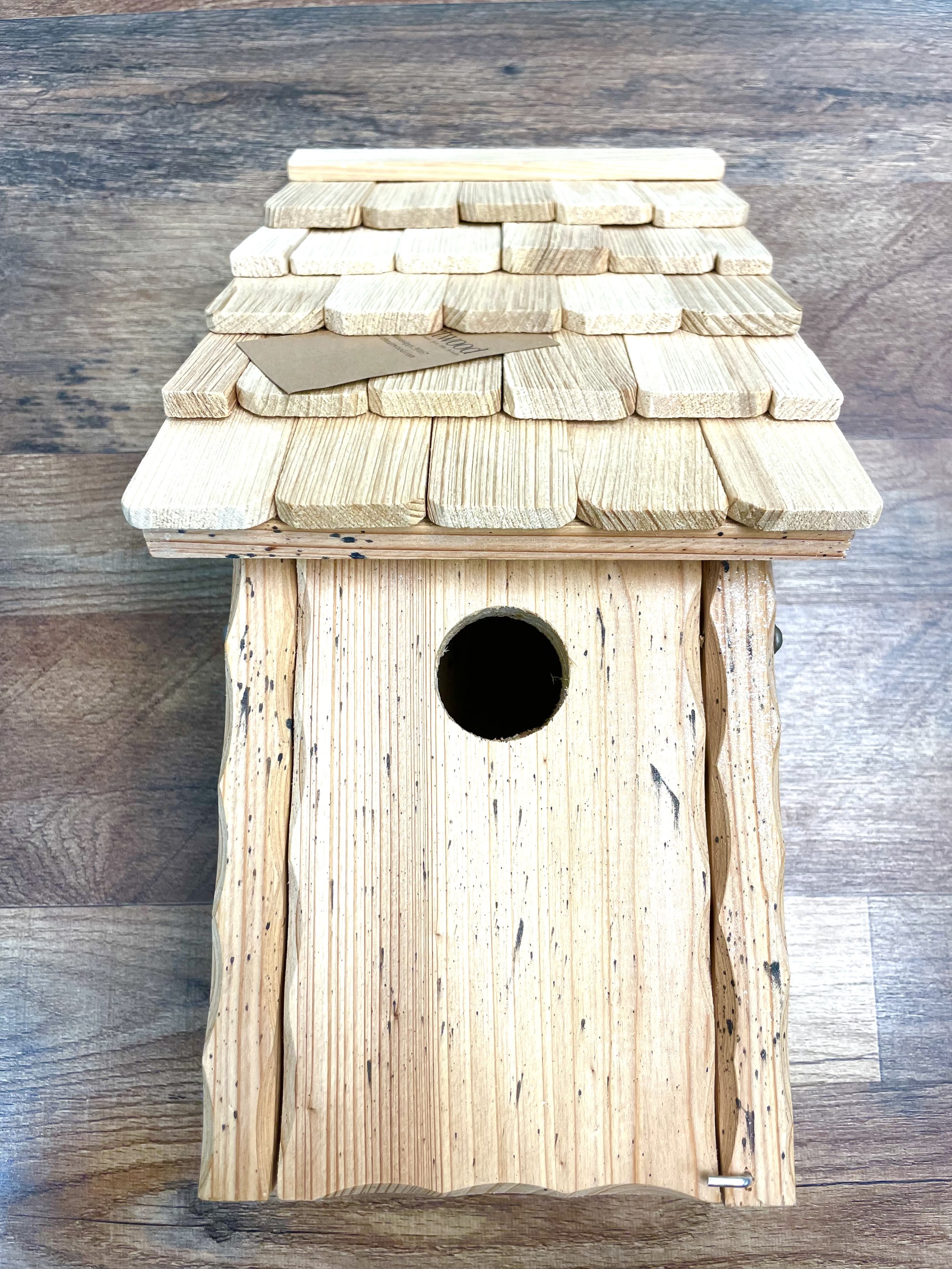Last week, we discussed our favorite overall bluebird house, the ATZ Woodcrafters Classic Bluebird box. This week we will go over our more decorative bluebird boxes. Our preferred options are produced by Heartwood and made by hand down in Star, Mississippi. Founded 20 years ago by brothers Jerry and Larry Glass, these two brothers transitioned from building houses for people to wood creations for local craft fairs and at their mother’s suggestion, began building bird houses. Fast forward to today, and their unique but practical bluebird boxes have become a perennial favorite of ours.
We are especially fond of the models shown here for their practicality and versatility. They work well on our three piece pole setup, ($58 with tax) a 4x4 post, fence, or even tree. All open from the front, top down, for ease of monitoring and cleaning between each nesting. With Mother’s Day just a month away, they also make great gifts!
Models shown:
(White: Bluebird Manor, $85)
(Yellow: Bluebird Bright, $85)
(Natural: Bluebird Bunkhouse, $92)




